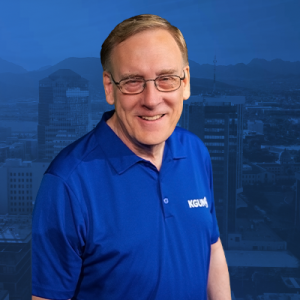TUCSON, Ariz. (KGUN) — The University of Arizona is building the ability to get a better view of deep space than ever before. A lab like no other, tucked under the football stadium, is the only place in the world able to make the special mirrors that will give a new giant telescope its power.
The Giant Magellan Telescope or GMT under construction in the clear dry air of the high desert of Chile will see more clearly than the Hubble Space telescope and see a deeper, wider view of the universe.
It will help us learn more about the vast numbers of galaxies, and learn more about planets that are rocky, like Earth, and in conditions that could support life as we understand it.
Dr. Rebecca Bernstein is Chief Scientist of the Giant Magellan Telescope Organization. She says, “We'll be able to image many of these numerous planetary systems actually see them orbiting will be able to measure the temperature and reflectivity of the planets to understand their composition and will even be able to take spectra of their atmospheres, so we can look for the right combinations of molecules that will tell us if these planets actually host life.”
For now the telescope is a construction site, while University of Arizona’s Mirror Lab makes the seven huge mirrors that will focus the light of the stars.
Now the lab is starting mirror number six. Rough chunks of super pure glass go into a honeycomb grid.
A lid transforms the chamber into a giant oven, which heats and spins the glass so centrifugal force forms a curve that cools and hardens into close to the perfect shape. That process will take about four months.
Dr, Buddy Martin with the Mirror Lab says it takes much more time after that to grind the mirror to a curve within one millionth of an inch of absolute perfection.
“I like to think of it as if the mirror were expanded to the size of North America, 3500, miles in diameter than the average Hill would be two thirds of an inch tall. And the average Valley two thirds of an inch. That's how smooth the mirror has to be for it to make the sharpest images that nature will allow.”
The mirrors will travel five thousand miles to that high desert in Chile. There they’ll get the thin coat of reflective aluminum that will help them focus the faint light that could shed more light on how the universe formed.
But astronomers using that power to look billions of light years into the past must be patient. The telescope may not be ready for almost a decade.




